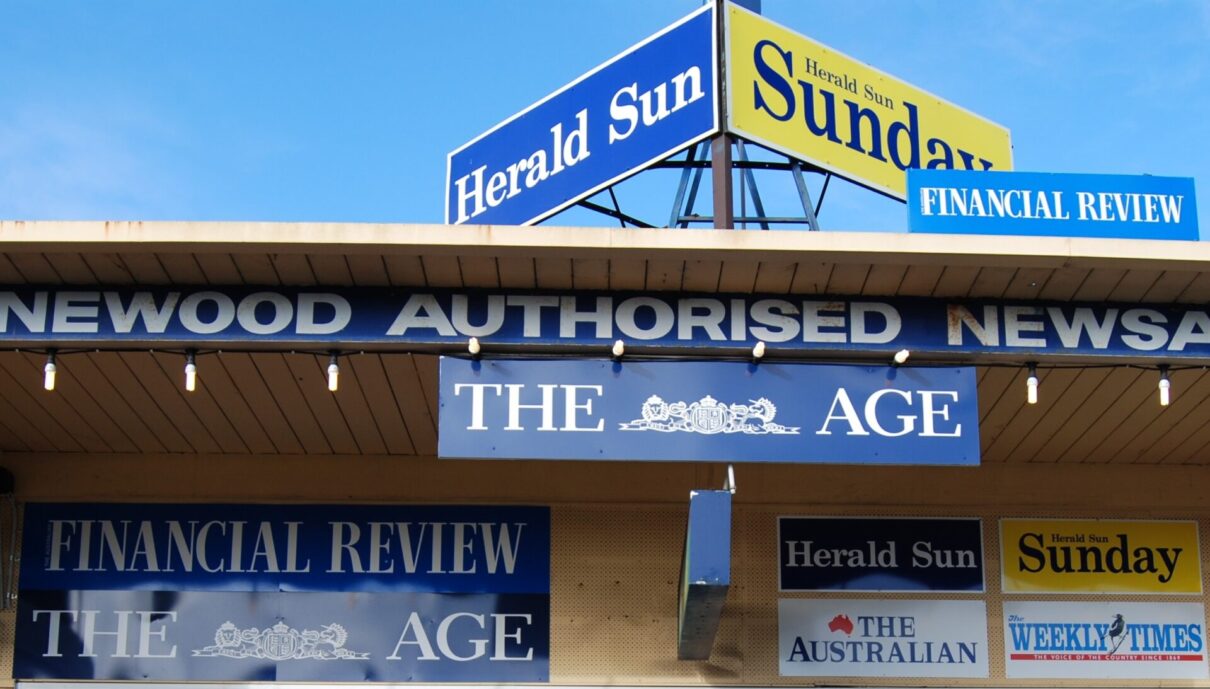Australia’s paper tigers – the state of news competition

A competitive and diverse news industry is key to a democratic society, keeping institutions accountable and transparent. But the ability of Australia’s Fourth Estate to perform that role is increasingly in doubt.
Australia was once labelled the “land of the newspaper” by British visitors, with a flourishing and diverse news industry, but for over a century its newspaper market has only become more concentrated and less competitive. In 1903 there were 21 daily newspapers in the capital cities, with 17 different owners; By the 1950s it was 15, with ten different owners. Now it’s even worse.
In recent decades, Australia’s media landscape has rapidly become more concentrated. The widespread adoption of the internet, and subsequent rise of online news, hit the news industry hard across the globe. Australia reacted to those shocks by moving in the wrong direction. Since the turn of the millennium, governments have significantly relaxed Australia’s media competition laws twice – by Howard in 2007, and by Turnbull in 2017 – allowing this country to have the second worst level of newspaper concentration in the world, behind only Brazil.
Today, Australia has just ten daily newspapers in the capital cities, owned by four companies.
Four of those newspapers are in Sydney and Melbourne, where Nine and News Corp compete in the daily news market, but in Australia’s other capital cities there is no daily competition. In fact, out of this country’s 20 largest cities, 18 lack competition between two comparable print media outlets. Ten million Australians, 39% of the population, live in those 18 uncompetitive newspaper markets.
If you go to a cafe, a newsagency, or the supermarket in one of those cities and want to get some daily news about the city you live in: there’s only one newspaper available. You might then search for an online alternative, but the largest online outlet is probably the same as the single newspaper. The smaller websites that do exist are subject to the same financial constraints that have rocked the industry for decades, all the while competing against better-resourced rivals, which means they don’t represent a like-for-like replacement for print competition.
News outside the biggest cities isn’t faring much better. Swathes of regional outlets have shut since 2019, and over a quarter of Australian local government areas – all in regional areas – now have no independent local news.
The media empires that control so much of Australia’s news industry have become hollow: focusing more and more on the capital cities and leaving regional areas lacking.
While News Corp boasts an impressive 119 news outlets registered with the Australian Press Council, only 19 remain as separate newspapers with their own print edition or website. The other 100 have been transitioned into a “digital-only” (as News Corp describes it) model, and are not really living publications, instead they exist in a kind of undead state. They still post on social media pages and in subsections of a capital city daily (such as the Daily Telegraph, or Courier Mail), but they don’t have their own websites or print editions.
Of the 100 undead papers, 75 are zombies – they were once their own newspaper, but were shut down and brought back to “life” digitally, losing any semblance of a separate identity (either in print or online) in the process. The other 25 are phantoms – they never even had a presence of their own and have always existed only as social media and a subsection. The zombie papers were generally in regional areas before their untimely demise, shut down in the last five or six years, and News Corp purports the phantom papers to be an expansion of their regional catalogue. However, neither the zombie nor phantom papers are any substitute for what many of the communities they serve had less than a decade ago – a living, breathing local newspaper.
While the other conglomerates don’t use this undead “digital-only” model, they aren’t faring much better. Australian Community Media, for example, published 170 local and regional newspaper titles at its peak in 2019, a number which shrank to just 62 by 2024. Earlier this year ACM shuttered even more outlets and announced a plan to shift its remaining daily newspapers to a weekly format by the end of the decade.
These changes come at a cost. At its best, local reporting is a centrepiece of the community, especially in regional areas; it keeps people informed, local government accountable, and can bring community issues to national attention. While regional newspapers have declined, so too have the number of journalists in regional areas: 57% of journalists live in inner-metropolitan areas, where only 30% of Australians live, and only 15% in rural where a quarter of Australians live. A community in central Sydney or Melbourne is, far more likely to have its stories told first-hand by locals who understand their community, while rural areas are often left with drive-in-drive-out journos.
At the time of writing, Australia is in the middle of an election campaign where the major parties and media are paying increasing attention to electorates in outer-metropolitan and regional areas. Peter Dutton has staked his victory chances on being able to understand those electorates as part of his “forgotten people” strategy. But with the country’s journalists concentrated in the inner cities, how can the news industry effectively cover such an election?
The rapid changes in the news industry have left only a handful of big conglomerates standing, and loosened ownership laws have allowed them to tighten their grip, now owning 84% of Australia’s newspaper market. Conglomerates are not serving the country well. Australians need news that reflects the diversity of the country, and to achieve that the industry needs journalists who live is a range of locations. Right now, it falls well short.
The role of the ABC, a national broadcaster not beholden to the same financial incentives as privately-owned media, is becoming increasingly vital. However, the national broadcaster has been implementing cuts to its regional services thanks to a reduced budget, so without intervention – in the form of more funding – the concentration of Australian news in only a handful of places will continue.
The Fourth Estate is one of the pillars that holds democracy upright. If it can’t perform its functions, making Australian society transparent and its institutions accountable, adequately then this country’s democracy is on wobbly footing indeed.
Between the Lines Newsletter
The biggest stories and the best analysis from the team at the Australia Institute, delivered to your inbox every fortnight.
You might also like
Australia’s gun laws aren’t as strong as you think
Nearly three decades after the Port Arthur massacre, there are more guns than ever before in Australia and there is still no national firearms register.
Just what I’ve always wanted! How pretending to like gifts will cost Australians over $1 billion this Christmas
Do you relish the look of joy and surprise on the faces of loved ones when they open your Christmas presents?
Nothing to love about gas or greenwashing – ACCC takes big gas to court
The Australian Competition and Consumer Commission’s federal court action against the gas industry over its “Love Gas” campaign, launched today, is an important step in the fight against greenwashing in Australia.


